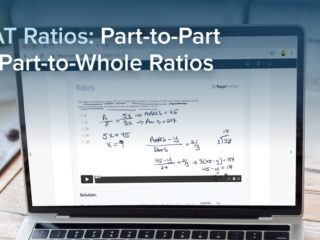Last Updated on May 9, 2023
GMAT OFFICIAL GUIDE DS
Solution:
If we have an evenly spaced set consisting of an odd number of numbers, then the middle number is the average. Since here we have 5 consecutive even integers (an evenly spaced set of an odd number of numbers) and r is the middle number, the average is r. Furthermore, not only is r is the average of the 5 numbers, but it’s also the average of the first and last number, i.e., p and t, and the average of the second and second-to-last number, i.e., q and s. We need to determine the value of r.
Note: If this is too difficult to see, let’s use 2, 4, 6, 8 and 10 as an example. We see that
1) 6 is the average of all 5 numbers since (2+4+6+8+10)/5 = 30/5 = 6,
2) 6 is the average of 2 and 10 since (2+10)/2 = 12/2 = 6, and
3) 6 is the average of 4 and 8 since (4+8)/2 = 12/2 = 6.
Statement One Alone:
q + s = 24
Since we know that r is the average of q and s, then r = (q + s)/2 = 24/2 = 12.
Statement one alone is sufficient to answer the question. We can eliminate answer choices B, C, and E.
Statement Two Alone:
The average (arithmetic mean) of q and r is 11.
Using the information in statement two we know that (q + r)/2 = 11 or q + r = 22. Since q is the even integer before r on the given number line, q = r – 2. Thus we can substitute r – 2 for q in the equation q + r = 22, and we have:
(r – 2) + r = 22
2r – 2 = 22
2r = 24
r = 12
Statement two is also sufficient to answer the question.
Answer: D



